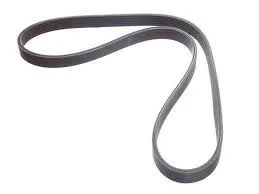- Arabic
- French
- Russian
- Spanish
- Portuguese
- Turkish
- Armenian
- English
- Albanian
- Amharic
- Azerbaijani
- Basque
- Belarusian
- Bengali
- Bosnian
- Bulgarian
- Catalan
- Cebuano
- Corsican
- Croatian
- Czech
- Danish
- Dutch
- Afrikaans
- Esperanto
- Estonian
- Finnish
- Frisian
- Galician
- Georgian
- German
- Greek
- Gujarati
- Haitian Creole
- hausa
- hawaiian
- Hebrew
- Hindi
- Miao
- Hungarian
- Icelandic
- igbo
- Indonesian
- irish
- Italian
- Japanese
- Javanese
- Kannada
- kazakh
- Khmer
- Rwandese
- Korean
- Kurdish
- Kyrgyz
- Lao
- Latin
- Latvian
- Lithuanian
- Luxembourgish
- Macedonian
- Malgashi
- Malay
- Malayalam
- Maltese
- Maori
- Marathi
- Mongolian
- Myanmar
- Nepali
- Norwegian
- Norwegian
- Occitan
- Pashto
- Persian
- Polish
- Punjabi
- Romanian
- Samoan
- Scottish Gaelic
- Serbian
- Sesotho
- Shona
- Sindhi
- Sinhala
- Slovak
- Slovenian
- Somali
- Sundanese
- Swahili
- Swedish
- Tagalog
- Tajik
- Tamil
- Tatar
- Telugu
- Thai
- Turkmen
- Ukrainian
- Urdu
- Uighur
- Uzbek
- Vietnamese
- Welsh
- Bantu
- Yiddish
- Yoruba
- Zulu
نويابىر . 15, 2024 16:24 Back to list
timing belt and chain
Understanding Timing Belts and Chains Key Components in Engine Performance
In the world of automotive engineering, timing belts and chains play a critical role in the functioning of internal combustion engines. These components ensure that the engine’s intake and exhaust valves open and close at the proper times in relation to the position of the pistons. This synchronization is vital for optimal engine performance, efficiency, and durability. Let’s delve deeper into the mechanics of timing belts and chains, their differences, advantages, and considerations for vehicle maintenance.
What are Timing Belts and Chains?
A timing belt is a reinforced rubber belt with teeth that connect the crankshaft to the camshaft. Its primary function is to maintain the precise timing of the engine’s valves. Timing belts are typically found in smaller, less performance-oriented engines. They are relatively quiet in operation and are lighter than chains, contributing to improved engine efficiency.
On the other hand, a timing chain is a metal chain that links the crankshaft to the camshaft. Timing chains are often used in larger engines, especially in performance vehicles. These chains are durable and designed to withstand higher levels of stress and temperature, making them ideal for high-performance applications.
Advantages of Timing Belts
1. Quiet Operation One of the most significant advantages of timing belts is their quiet operation. Due to the material used and the fact that they are more flexible, timing belts tend to generate less noise compared to chains.
2. Weight Timing belts are lighter than timing chains, which can contribute to a lower overall engine weight. This characteristic can enhance vehicle performance by improving fuel efficiency and acceleration.
3. Cost Generally, the initial cost of a timing belt replacement is lower than that of a timing chain replacement. Timing belts can be less costly to manufacture, leading to lower vehicle prices in some cases.
timing belt and chain

Advantages of Timing Chains
1. Durability Timing chains are more durable than belts, often lasting the lifetime of the engine. While timing belts typically require replacement every 60,000 to 100,000 miles (96,000 to 160,000 kilometers), chains usually do not have a specific replacement interval unless they show signs of wear or damage.
2. Maintenance-Free Most timing chains are designed to be maintenance-free, meaning they do not require regular replacement like timing belts. This can lead to long-term cost savings.
3. High Performance Timing chains are better suited for high-performance and high-revving engines, providing the strength needed to handle significant stress and power.
Maintenance Considerations
Regardless of the type of timing mechanism used, proper maintenance is essential for engine longevity. For vehicles with timing belts, it is crucial to follow the manufacturer’s recommended replacement schedule. Ignoring this maintenance can lead to a snapped belt, which may cause severe engine damage.
For timing chains, while they may not require as frequent replacements, other components within the timing chain system, such as tensioners and guides, may wear out and lead to complications. Regular engine oil changes and keeping the engine lubricated can significantly enhance the lifespan of these components.
Conclusion
Timing belts and chains are indispensable components in the transportation sector, serving the crucial role of synchronizing engine components for optimal performance. While each system has its advantages and distinct characteristics, the choice between a timing belt and a timing chain often comes down to the specific application, engine design, and performance requirements. Understanding these mechanisms can help drivers make informed decisions regarding vehicle maintenance and performance, ensuring efficient and reliable engine operation for years to come. Ultimately, whether equipped with a belt or chain, the key to longevity lies in adherence to maintenance schedules and early detection of potential issues.
-
Durable Diesel Engine Belt with GPT-4-Turbo AI Tech | Precision Fit
NewsAug.04,2025
-
High-Quality Tensioner Belt Pulley - Durable & Efficient
NewsAug.03,2025
-
Premium Timing Belt Factory | AI-Optimized Solutions
NewsAug.02,2025
-
Premium Custom V Belts Enhanced with GPT-4 Turbo AI
NewsAug.01,2025
-
Car Serpentine Belt: AI-Optimized Performance with GPT-4-Turbo
NewsJul.31,2025
-
Heat Joining Drive Belt | High-Durability Fusion Solution
NewsJul.31,2025

